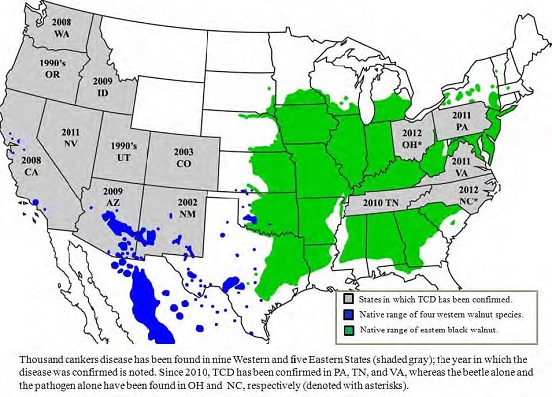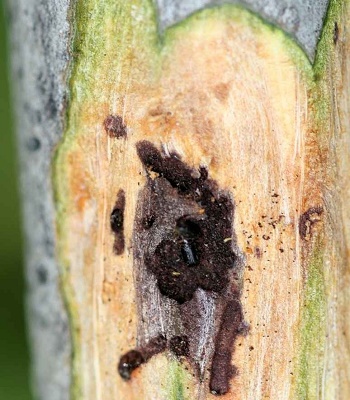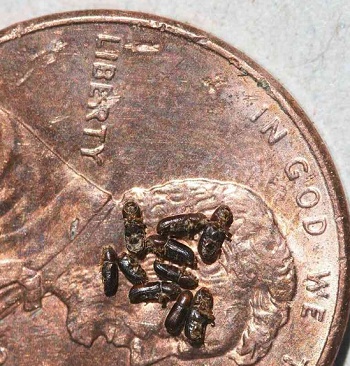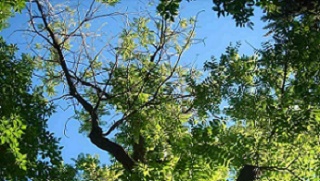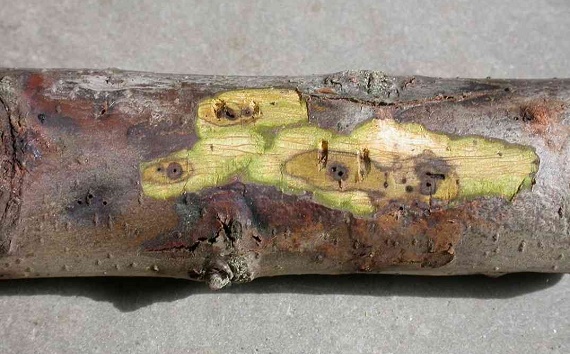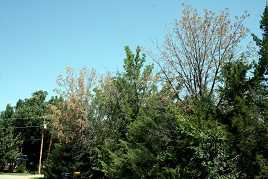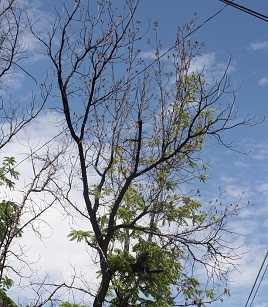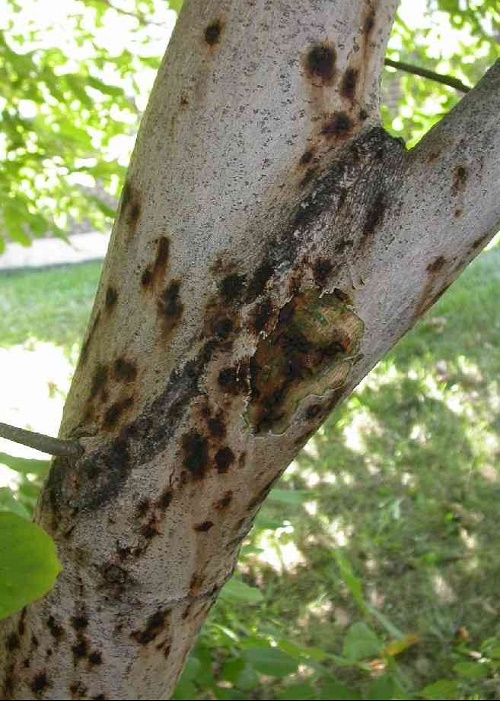What to Look For
Thousand Cankers Disease of Black Walnut

The black walnut (Juglans nigra) is one of the most sought-after native hardwoods. It is prized for its fine straight grained wood and tangy nutmeats. Iowa is 6th in the nation in production of walnut lumber, while Missouri is first in the nation in both production of walnut lumber and nutmeats.
Thousand cankers disease (TCD) threatens the entire United States walnut industry, and is caused by a recently described fungus, Geosmithia morbida , that is vectored by the walnut twig beetle, Pityophthorus juglandis.
